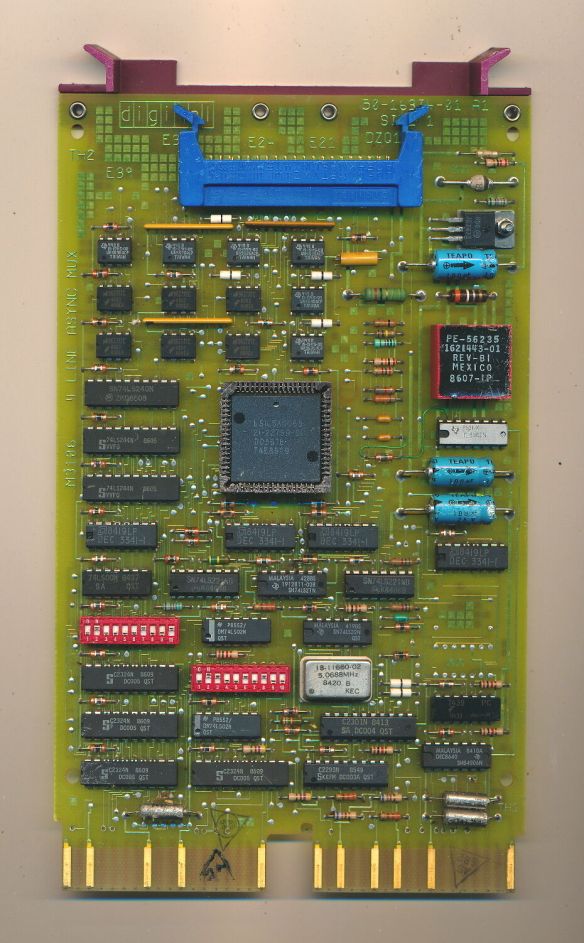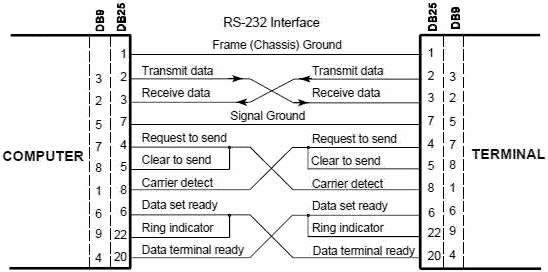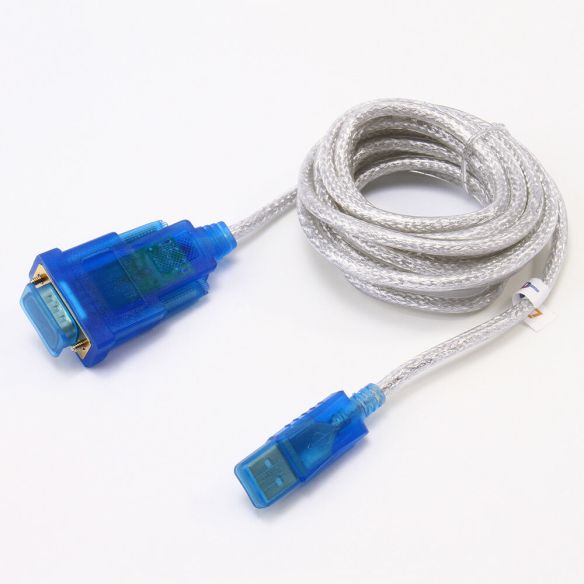Part 12 of a series: DEC PDP-11/23+ Restoration
The CPU board I’ve chosen has two built-in serial ports, but I’ll need more ports when I upgrade the system and run UNIX with support for multiple users. The serial I/O controller (DEC M3106) that I’m using has 4 additional serial ports, so that should work nicely. I cleaned up the board, installed it, and suddenly I’ve got a timesharing machine! Well, almost…

The PDP-11/23+ uses old-style, agonizingly slow, RS-232 serial communications that is practically unheard of these days, but was very common back in the day for connecting computers, terminals, modems, and printers. The headache of mixing and matching RS-232 serial connectors, DB9, DB25, adapters, cables, baud rates, stop bits, parity bits, DCE, DTE, DTR, DTS, XON, XOFF, full-duplex, half-duplex, gender changers and null modems has been all but eliminated by modern USB. 25 years ago, you could walk into a Best Buy or Radio Shack store and buy all of the serial gear you needed. Today, it’s only found online.

Wikipedia has a great article on RS-232 serial communications that will teach you more than you ever wanted to know about yesterday’s struggles to get machines to talk to one another. Murphy’s Law was alive and well back then and the chances of having the correct combination of hardware, software, and configuration settings on the first try was just about zero.
To start, you needed a connector with the correct size and gender on each end of the cable. Adapters converted between 25-pin and 9-pin connectors and gender changers converted back and forth between male and female pins. Null modems crossed the receive and transmit lines so devices could interact.
Since I don’t have a proper serial terminal (e.g. DEC VT-100) yet, I’m using a magical device that converts RS-232 to USB so that I can connect to the PDP-11 console line with a terminal emulator running on my laptop computer. I’ve tried a number of these converters and many of them don’t work well, but this adapter, from D-Tech, seems to be pretty solid.





Oh, gods, I know it well! Or at least, I used to.
Back in the 11/23’s day, at least 9-pin connectors weren’t an issue. Those didn’t really come into (common?) use until a few years later. But still, genders and DCE/DTE and hardware flow control were more than enough to drive you crazy — and that’s before you got to configuration-level stuff like baud rate and parity.
A breakout box (https://en.wikipedia.org/wiki/Breakout_box#/media/File:KL_Break_Out_Box_RS-232.jpg) was an incredible time-saver. If I recall, mine had both genders on at least one side; maybe even on both sides.
A brilliant bit of design on DEC’s DLV11-J serial card. It’s lower-end than yours; baud rates and such aren’t software-configurable; it’s all done via wire-wrap jumpers. Instead of a single wide header for the serial lines, it has four 10-pin headers. The brilliance is in the pinout of those headers: you get a null modem simply by flipping the cable over. Plug the header in one way up, the DB-25 at the other end presents a DCE; the other way up, you get a DTE.